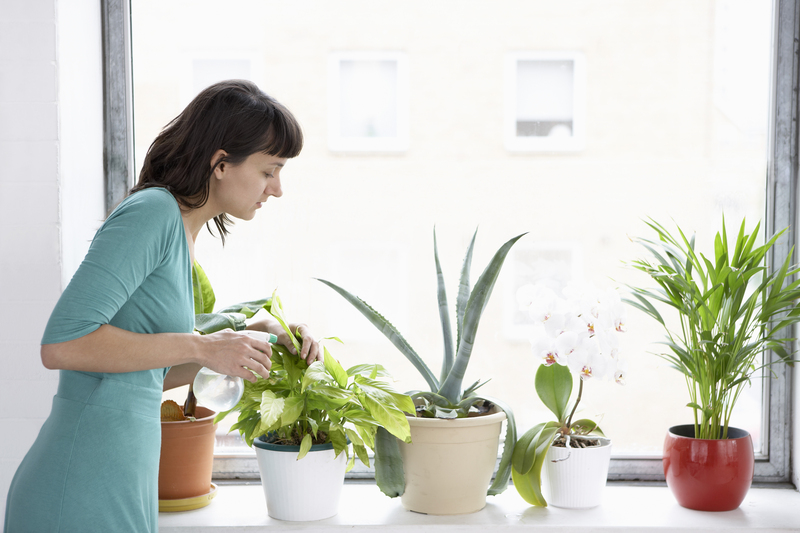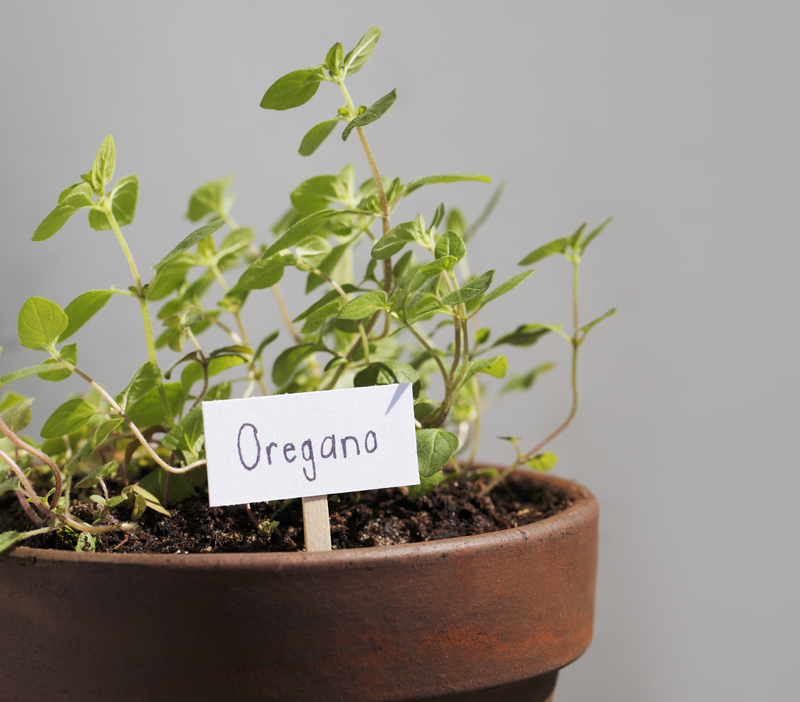Eco Gardening: Reducing Carbon Footprints
Posted on 19/06/2025
Eco Gardening: Reducing Carbon Footprints in Your Backyard
Eco gardening is rapidly gaining momentum as more people seek sustainable ways to nurture plants, flowers, and vegetables. More than gardening for beauty or produce, it focuses on creating a balance with nature, conserving resources, and cutting down on individual and household greenhouse gas emissions. In this thorough guide, we'll delve into eco-friendly gardening practices and explore how you can use sustainable methods to reduce your carbon footprint while reaping the joys and rewards of growing your own green oasis.

What is Eco Gardening?
Eco gardening is a conscientious method of gardening that respects the environment. It aspires to minimize harm, conserve resources, and support native ecosystems. Unlike conventional approaches that often rely on chemical inputs and resource-heavy solutions, eco gardening is about working with nature, not against it.
- Reducing reliance on fossil fuels for garden maintenance
- Cutting down on water usage with drought-tolerant plants
- Enriching soil organically and encouraging biodiversity
- Offering wildlife habitats and supporting pollinators
- Composting kitchen and garden waste to reduce landfill contribution
Eco-conscious gardening doesn't require a huge investment. Small, incremental changes are both manageable and extremely effective in decreasing your garden's environmental impact.
Understanding the Carbon Footprint of Gardening
When we think about our personal carbon footprints, transportation or electricity may come to mind first. But have you considered the environmental cost behind maintaining your backyard or balcony plants? The carbon footprint of a garden includes:
- Emissions from manufactured fertilizers and pesticides
- Powered landscaping equipment like mowers and leaf blowers
- Transportation of garden products from producers to your local nursery
- Overuse of water and inefficient irrigation
- Waste sent to landfill, producing methane (a potent greenhouse gas)
By adopting eco-friendly gardening practices, every gardener can positively influence their environmental impact and take real steps toward carbon footprint reduction.
How Does Eco Gardening Help Reduce Carbon Emissions?
Implementing eco gardening techniques directly translates to lower greenhouse gas emissions. Here's how:
- Soil Carbon Sequestration: Healthy soil acts as a carbon sink, absorbing carbon from the atmosphere through plant roots and retaining it in organic matter.
- Less Transportation and Packaging: Growing your own food means fewer store trips, curbing the emissions tied to packaging, transportation, and refrigeration.
- Organic Fertilizers: Compost and organic amendments reduce the need for energy-intensive synthetic fertilizers and their associated emissions.
- Biodiversity: Diverse, native plant gardens support pollinators and wildlife, fostering ecosystems that naturally cycle nutrients and store carbon.
- Reduced Waste: Composting garden and kitchen waste slashes methane production in landfills.
- Efficient Water Use: By conserving water, eco gardeners reduce the energy footprint associated with water treatment and transportation.
Each of these practices, when adopted, make a tangible difference and allow every gardener to contribute to a greener, healthier planet.
Eco-Friendly Gardening Techniques for Reducing Your Carbon Footprint
1. Composting: Turning Waste to Wealth
Composting lies at the heart of sustainable gardening. Every year, millions of tons of food and yard waste are sent to landfills, producing methane as they decompose anaerobically. Backyard composting transforms this waste into a valuable, nutrient-rich soil amendment while dramatically cutting emissions.
- Set up a compost bin or pile for fruit and vegetable scraps, coffee grounds, eggshells, grass clippings, and leaves.
- Turn your compost regularly for aeration and faster decomposition.
- Use finished compost to nourish your garden beds, containers, or even your lawn.
2. Mulching: Nature's Blanket
Mulch helps to lock moisture in the soil, suppress weeds, and improve fertility as it breaks down. Using organic mulches like straw, leaves, wood chips, or grass clippings ensures that you're recycling materials and minimizing carbon-intensive products like plastic weed barriers.
3. Water Wise Gardening
Water use is a hidden source of carbon emissions, especially in areas where water must be pumped over long distances. You can use these strategies to make your garden more efficient:
- Install drip irrigation systems or soaker hoses to target water directly at roots.
- Opt for drought-tolerant and native plants that thrive with less water.
- Collect rainwater using barrels to further reduce your garden's reliance on municipal supplies.
4. Native and Pollinator-Friendly Planting
Building a garden filled with native plants cuts your carbon gardening impact by reducing the need for supplemental watering and chemical inputs. Native plants are adapted to local conditions and provide essential resources for pollinators and local wildlife.
- Research and choose plants that naturally thrive in your climate and soil.
- Create wildlife corridors by connecting your garden to parks or other green spaces.
- Include flowers, shrubs, and trees that bloom at different times to support year-round pollinators.
5. Organic Soil Enrichment
Avoid synthetic fertilizers, which are not only energy-intensive to produce but also can release nitrous oxide, a powerful greenhouse gas. Instead, enrich your soil naturally:
- Use homemade compost, aged manure, or organic fertilizers such as bone meal or seaweed extract.
- Rotate crops and plant cover crops (like clover or vetch) to rebalance and restore soil health.
- Allow some areas to regenerate with fallow periods, letting nature rebuild depleted soil.
6. Low-Impact Gardening Tools
Petrol-powered lawnmowers, leaf blowers, and edgers contribute considerably to garden-based emissions. Opt for the following instead:
- Manual tools, such as push mowers and hand rakes
- Electric or battery-operated equipment for when powered tools are necessary
- Regular maintenance of tools to extend their life and working efficiency
7. Reuse and Recycle
Give new life to old pots, timber, stones, and furniture by upcycling them in your garden projects. This reduces demand for new materials, saving on embedded carbon from manufacturing and transport.
- Build raised beds from reclaimed wood
- Re-purpose containers for planters
- Create garden art or paths from salvaged items
Benefits of Eco Gardening Beyond Carbon Reduction
Eco gardening not only helps in reducing greenhouse gases but also brings a host of other environmental and personal benefits:
- Biodiversity Boost: Attracts birds, bees, butterflies, and beneficial insects.
- Soil Health: Promotes robust, living soils teeming with microorganisms.
- Healthier Food: Homegrown produce is fresher and potentially more nutritious, with no synthetic chemicals.
- Mental Wellbeing: Gardening reduces stress, improves mood, and strengthens your connection with nature.
- Community Building: Sharing seeds, plants, and harvest fosters stronger community ties and local resilience.
Common Eco Gardening Myths Debunked
-
Myth: Eco gardening is time-consuming and expensive.
Fact: Many sustainable practices save time, effort, and money in the long run, such as mulching, composting, and choosing pest-resistant plants. -
Myth: You can't have a beautiful garden without chemicals.
Fact: Organic techniques and biodiversity create healthier, more vibrant gardens naturally. -
Myth: Compost heaps are smelly and attract pests.
Fact: Properly maintained compost bins shouldn't smell foul and can be critter-proofed with fine mesh or closed bins.
Planning and Designing Your Eco Garden
Start Small, Think Big
Every little bit helps. If space is at a premium, container gardening or a few raised beds offer great places to practice sustainable methods. Rooftop, windowsill, and balcony gardens are all valuable in the fight against climate change.
Design for Diversity and Function
- Mix annuals and perennials for continuous color, food production, and ecosystem services.
- Include trees and shrubs for carbon storage and habitat provision.
- Layer plants with ground covers, vines, mid-story shrubs, and tall canopies to maximize productivity and mimic natural ecosystems.
Minimize Lawn Area
Lawns are resource-intensive, requiring frequent mowing, watering, and fertilizing. Replacing some or all of your turf with wildflower meadows, native grasses, vegetable beds, or ground covers can vastly slash your garden's carbon emissions.
Advanced Tips for Reducing Your Garden's Carbon Footprint
Harvest Rainwater and Greywater
Go beyond rain barrels--use simple diverters for laundry or shower water (greywater) to irrigate ornamental plants, reducing your dependency on treated water and lowering your environmental impact.
Create a Closed-Loop System
- Feed chickens or rabbits with garden surplus and kitchen scraps, then use their manure (composted) in beds.
- Save seeds and cuttings to propagate new plants, lessening nursery visits and packaging waste.
- Grow your own mulch by planting comfrey, alfalfa, or other "green manure" crops.
Encourage Carbon Storing Trees
Trees are prime carbon sinks. If possible, plant fruit or nut trees for dual benefits of food and carbon storage. Every mature tree absorbs about 22kg of CO2 annually, making them indispensable in any eco gardener's toolkit.
Inspiring Examples and Case Studies
Worldwide, communities are embracing low-carbon gardening. Some inspiring initiatives include:
- Urban farms on vacated land provide local food and green lungs in cities.
- School gardens teach children about climate change and eco-friendly gardening solutions.
- Community compost hubs reduce food waste and create resources for public green spaces.

Your Eco-Friendly Gardening Checklist
- Start a compost bin or community compost subscription
- Switch to hand or electric garden tools
- Plant natives and drought-tolerant species
- Mulch regularly with local, organic matter
- Set up rain or greywater collection systems
- Grow edibles to reduce "food miles"
- Reduce lawn size and increase plant diversity
Conclusion: Making a Difference, One Garden at a Time
Eco gardening is a powerful, joyful response to climate change that is accessible to everyone, everywhere. By integrating environmentally-friendly gardening practices into your daily life, you play an active role in lowering carbon emissions, preserving precious resources, and creating spaces that nourish both body and soul.
Whether you're a beginner or an experienced gardener, every step toward sustainability is a valuable victory for the planet. Cultivate your green thumb, reduce your household's carbon footprint, and inspire others by leading the way toward a more sustainable future--one garden at a time.

